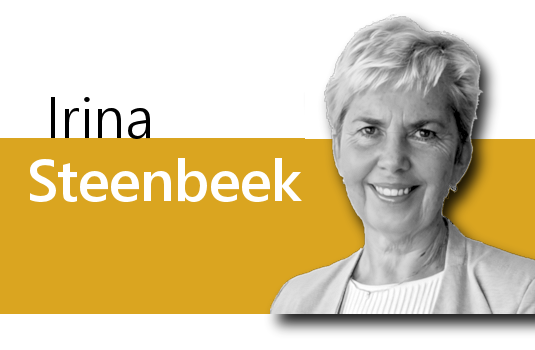
Strategy Meets Autonomy: How to Align People, Data and Agents
It’s become quite apparent that we are moving from the age of digital transformation and we are moving, albeit slowly, toward the age of digital autonomy. I say slowly because our attempt to jump on new fads and then learn that it’s not a panacea can generally take a bit of time. But we are where we are; many articles have come out about how Agents aren’t working; I refer to Klarna and their investment into an AI workforce first culture, and then a year later, the experiment didn’t quite offer the efficiencies and the delightful experience these agents were expected to offer.
It is true, that we have used ML which as you know is a subset of AI, but the most widely known and probably the most successful, perhaps. Many believe that AI (or ML in this instance) has shifted from making recommendations to making decisions. The big hype is that Agents are no longer support tools; they’re actors in your business.
If you disagree with me and can highlight successful Agent implementations that have replaced humans, then now is your time to speak up and offer examples.
Let us get back to the title of this article and how we need to change the way we think about strategy and more importantly, the operating model.
Because if your business still runs on hierarchies, workflows, and decision rights designed for humans only, you’ve already lost ground. The real challenge isn’t AI capability, but its alignment with the fair human. Therefore, my question to you is this: How do you get agents and humans working in sync, towards shared business outcomes?
This article offers a no-fluff framework for reshaping your data and business strategy, and your operating model, for this new agentic/human reality. What I want to stress here is this article doesn’t glorify the Agentic AI phenomenon that is sweeping everyone’s breath away!
Let’s Stop the Separation
Many organizations today still treat business and data strategy as two separate tracks. Data teams produce dashboards and AI models; business teams chase growth. Occasionally, someone tries to “bridge the gap.” The gap that has been so eloquently discussed in several posts by Dr. Markus Schmidberger.
So, in this article, I want to confront this problem. Agents operate in real-time, act across silos, and need context and if your business objectives aren’t built into your data and AI environment, these agents will either do the wrong things or do nothing useful at all.
Because of the breaking down of silos that many have spoken about for many may years, then I go back to the idea that we don’t need two strategies. We need one strategy, that is anchored in outcomes, supported by data, and executed by both humans and agents. That means rethinking how your business is designed to operate.
Aligning Strategy, Data, & Operating Model Through a Practical Framework
As you know I’ve been a data strategist now for well over 20 years, first dipping my toe into this field of dreams in 2002. Since then, I’ve actively pursued building frameworks, canvases (example the data strategy canvas), for the simple reason to be able to provide a set of guiding principles that leadership teams can use and if they are serious, how they can get it right.
So, in today’s article I’m providing a framework built on five steps, and at its core there is one simple idea. It is this: agents don’t sit outside the business; they are part of how the business runs. Let that sit with you for a moment. So, here are my 5 steps.
1. Define Business Outcomes Agents Can Actually Drive
It’s not enough to say, “we want to improve efficiency” or “boost customer experience.” You need to define clear SMART objectives, model the decisions and actions that agents can take. Now in all it’s simplicity, here are two main questions, two simple questions that you as an executive sponsor and your team should attempt to answer:
- Where in your business are decisions slow, repetitive, or inconsistent?
- What actions would you be comfortable delegating to a machine?
If you can’t answer those questions, then you aren’t ready for agents, because agents act, they need direction, and that direction has to come from the top.
2. Rebuild the Operating Model for Human–Agent Alignment
This is the critical shift. I have written about operating models extensively as I see it as the area that bridges the gap between strategy and execution, business and IT, company and customer and so on. The heartbeat and rhythm of how organisations will sustain and deliver on their promises. Often under looked, under represented and most organisations today don’t focus their efforts on implementing meaningful operating models.
As this article focuses on the close integration of the human and agent, then as of today, most current operating models have been designed for human workflows: approvals, meetings, escalations, layers of oversight. So, this mindset shift needs to occur, because agents don’t follow those paths. The agent is there to act, not to wait, and in some instances, not to escalate. So, organisations need a different operating model, where:
- Agents have defined roles, just like humans. They need mandates, responsibilities, and boundaries.
- Humans and agents work in loops, not handovers. Think of product teams or service operations where agents execute, and humans supervise, improve, or override.
- Decision rights are shared or hybridised. In some areas, agents will take the first pass and in others, they will assist or alert. The key is clarity, who’s doing what, and when?
This is less about “governance” and more about choreography. If you don’t consciously design how humans and agents work together, the result will be confusion, resistance, or worse blind trust in poor decisions.
3. Anchor Everything in Use Cases
Yes, I know I bang on about this one, but it is massively important. As a reminder and a nudge, this doesn’t mean you need to go and create a 100-page strategy document, that sits on the shelf. You need a handful of meaningful business use cases that align with business outcomes, data, technology, and operations together to deliver value.
These use cases should:
- Be sponsored by the business, not just tech or data teams.
- Involve clear metrics that show how value is created, i.e. reduced cost-to-serve, better customer retention etc.
- Require changes in both technology and ways of working.
Use cases are where your strategy starts to be more impactful. Without them, you are just building a technology stack that feeds the ego.
4. Build a Lightweight, Responsive Data Spine
Agents need data. But not all of it. And not in a lake, warehouse, or whatever the latest architecture fad is.
What they need is fit-for-purpose, context-rich data, delivered in real time, across silos. That requires a connected backbone—not a sprawling estate.
This is where data teams must step up, you aren’t just building infrastructure anymore. What you are enabling is decision intelligence and action, which in business terms means prioritising speed, relevance, and quality over perfection.
A minimum viable spine is better than a maximum viable delay. I’m not an architect, and therefore I profess my knowledge lacks in this area, but my vision for this isn’t limited to a data lake etc. We need to build this backbone from a business perspective, and not from a purist data perspective. What does that mean because I know I will get shot down? It means, understanding how decisions and actions are taken, where they are taken, by whom and when. This means, we need to work around the constructs of a business, not the business needs to work around a data warehouse. This is about seamless and frictionless delivery of insights that lead to intelligent decisions and actions.
5. Redefine How You Measure Success
When we think about measurements or metrics, we need to step away from the data metrics or tech metrics, that many teams focus on. I think we even must move away from the traditional ROI models focus on cost savings and headcount. In this day and age, I’m not sure that these metrics can support what organisations are attempting to achieve, as I don’t think this will capture the value agents bring. I may be wrong, and that’s perfectly fine as this is still a new field and people are still finding their way. So, instead of measuring what we are comfortable with, it’s time to start measuring three things, which I think may help the organisation from a people, mindset and psychology perspective. Here are my thoughts:
- Decision velocity – how fast good decisions are being made.
- Human lift – how much time and mental load you’re removing from teams.
- Process compression – how many steps or layers agents can eliminate.
Maybe, you have some other metrics, but if this is more about decisions, people and process, then I think we must switch our perspective. If your executive team can’t see the impact agents are having, they won’t invest, or worse, they’ll over-invest in the wrong things.
This Is a Business Redesign, not a Tech Upgrade
Many organizations are still attempting to figure this out, and that’s fine. But, if you are talking about AI, but not doing the hard work of redesigning how your business operates when agents are in the mix, then you aren’t really thinking about the profound and radical change this will bring. Make no mistake about this at all, this is a complete shift in the way your business operates and a redesign.
One that aligns strategy, data, humans, and agents around a common goal. One that forces clarity on how decisions are made, how value is created, and how work gets done.
If you don’t take the lead in shaping that alignment, the tech will shape it for you, and as we have seen that never ends well.
Finally, I leave you with these three questions:
- Are your business and data strategies really aligned?
- Is your operating model designed for agent–human collaboration?
- Or are you just layering AI on top of an old system that’s already buckling?
Now’s the time to find out.

 - by
- by






